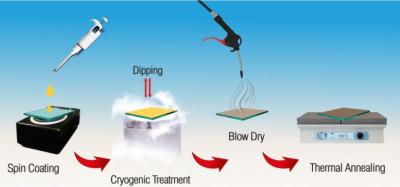EPFL and AMI teams develop a method to replace one of the least stable components in perovskite solar cells
Researchers at the Adolphe Merkle Institute in Fribourg and the Ecole Polytechnique Fédérale de Lausanne have developed a new technique to replace one of the least stable components in perovskite solar cells, which could be a major step towards commercialization.
Perovskites are seen as promising thin-film solar-cell materials because they can absorb light over a broad range of solar spectrum wavelengths thanks to their tuneable bandgaps. Charge carriers (electrons and holes) can also diffuse through them quickly and over long lengths. The most efficient perovskite solar cells usually contain bromide and MA, which is thermally unstable. To overcome this problem, researchers tried replace MA with FA since it is not only more thermally stable but also has an optimal redshifted bandgap. Unfortunately, because of its large size, FA does distort the perovskite lattice and tends to produce a photoinactive 'yellow' phase at room temperature. The other photoactive 'black phase' can only be seen at high temperatures. However, the researchers in this new work have now found a way to stabilize the black phase of FA at room temperature.







